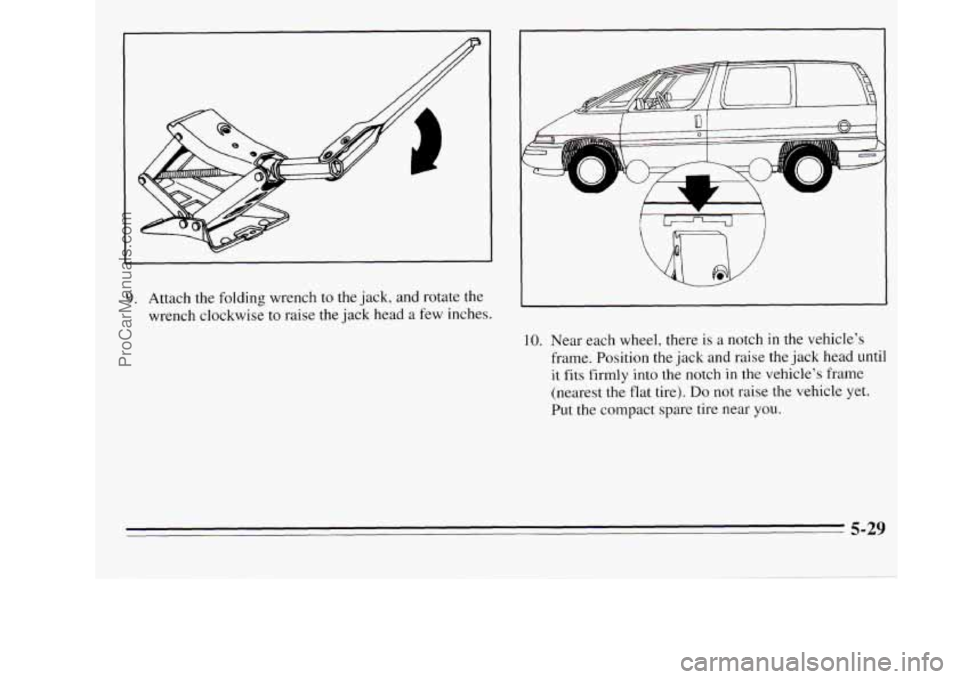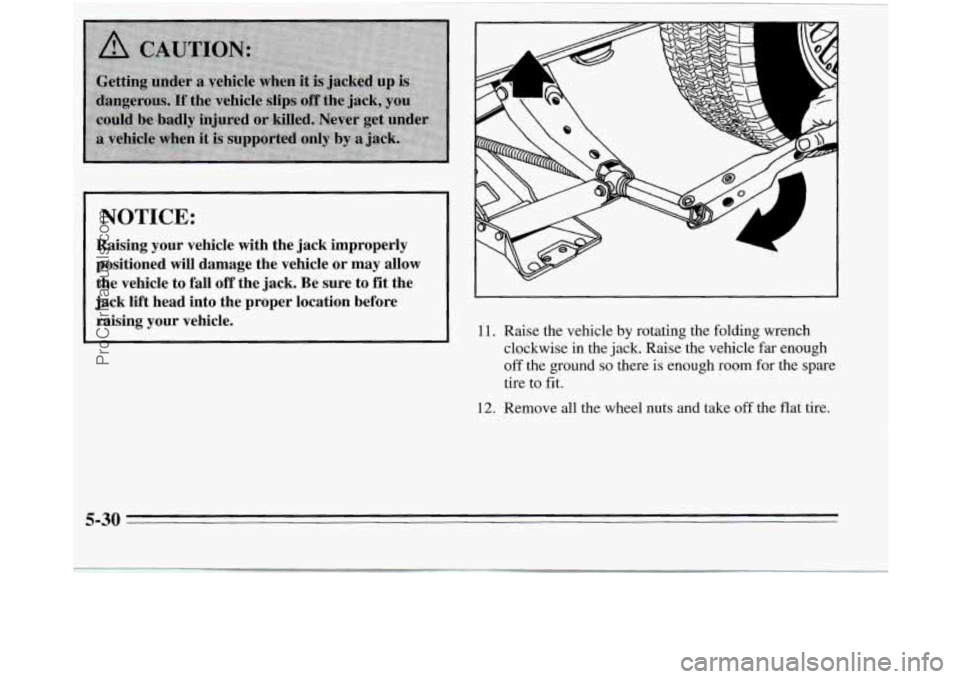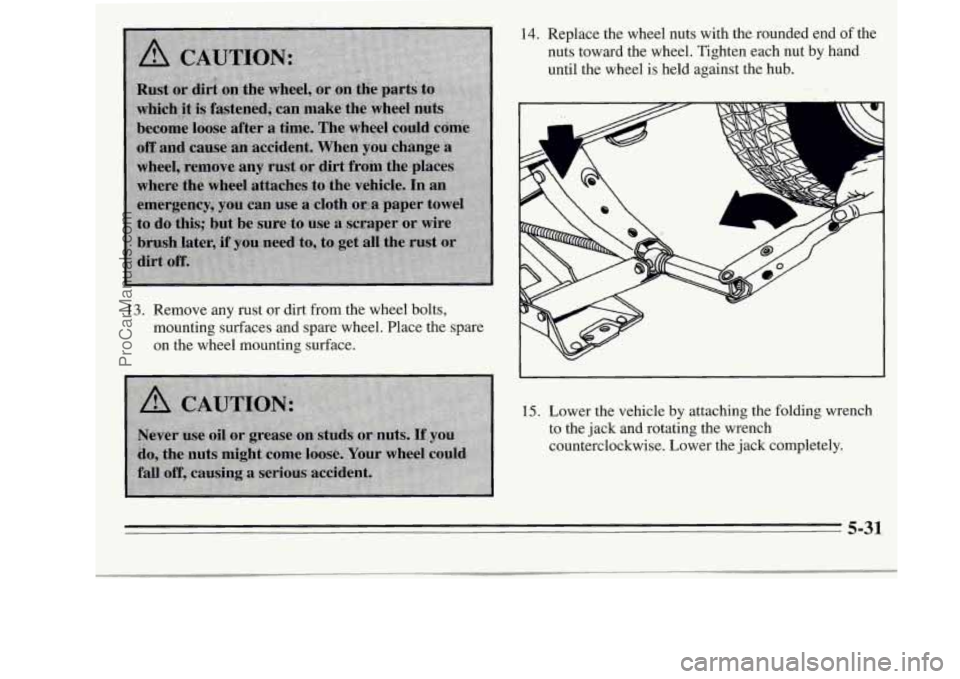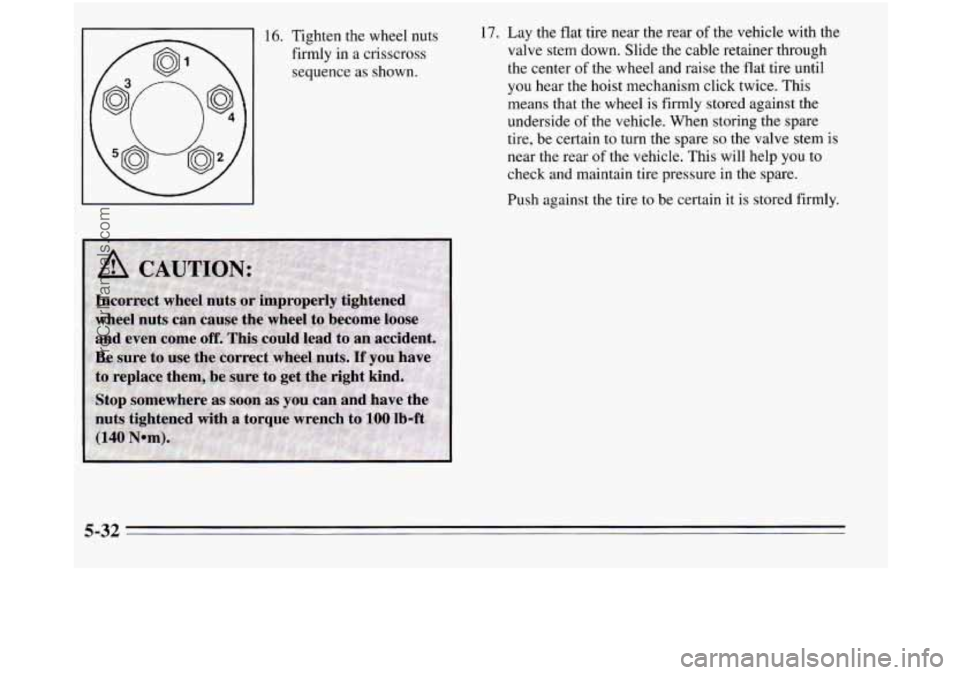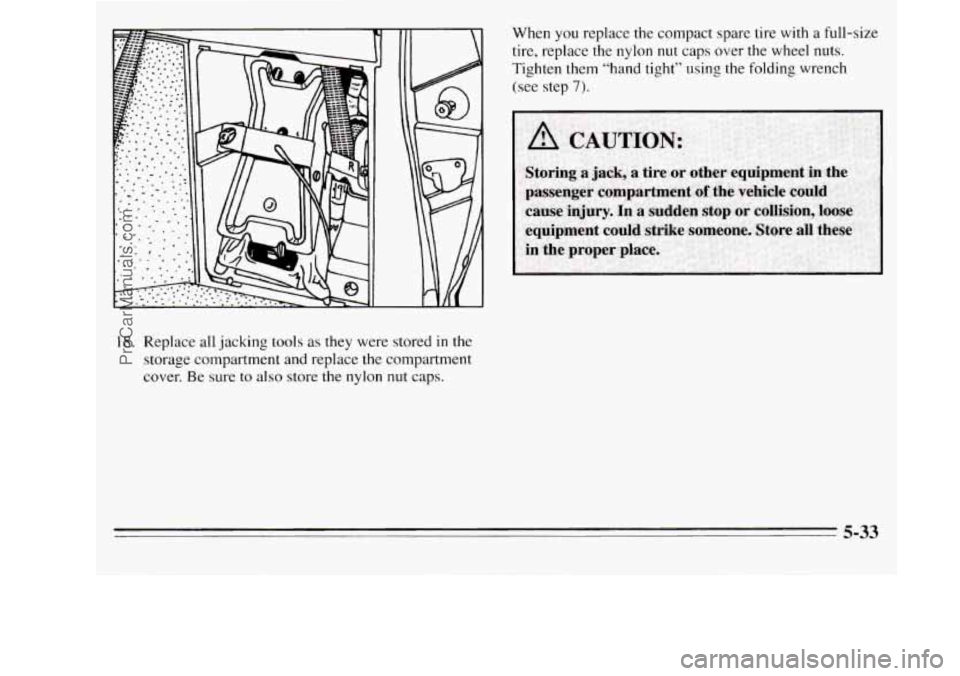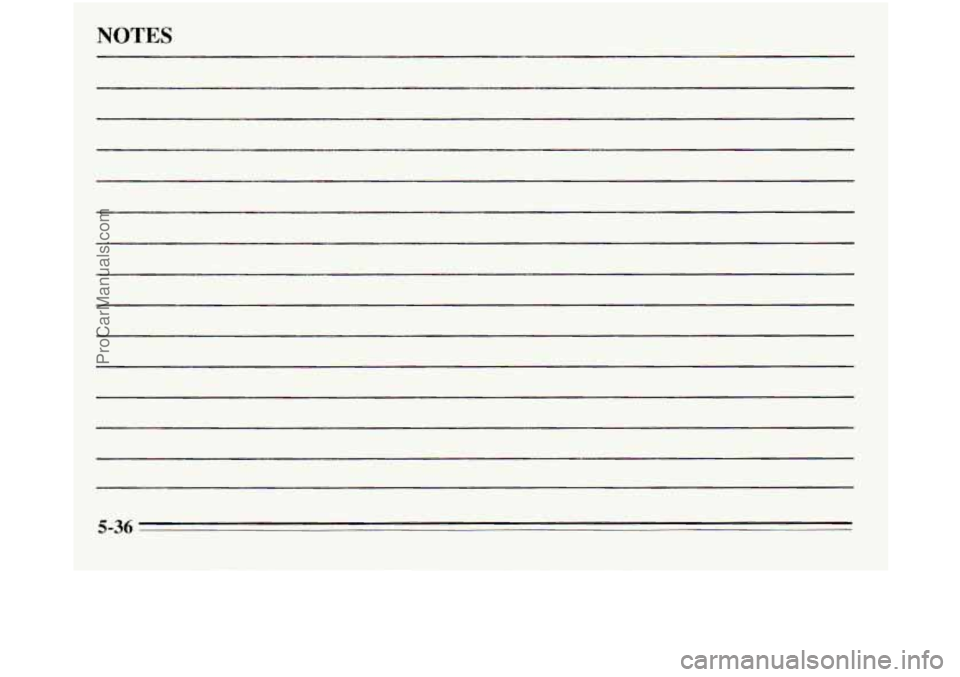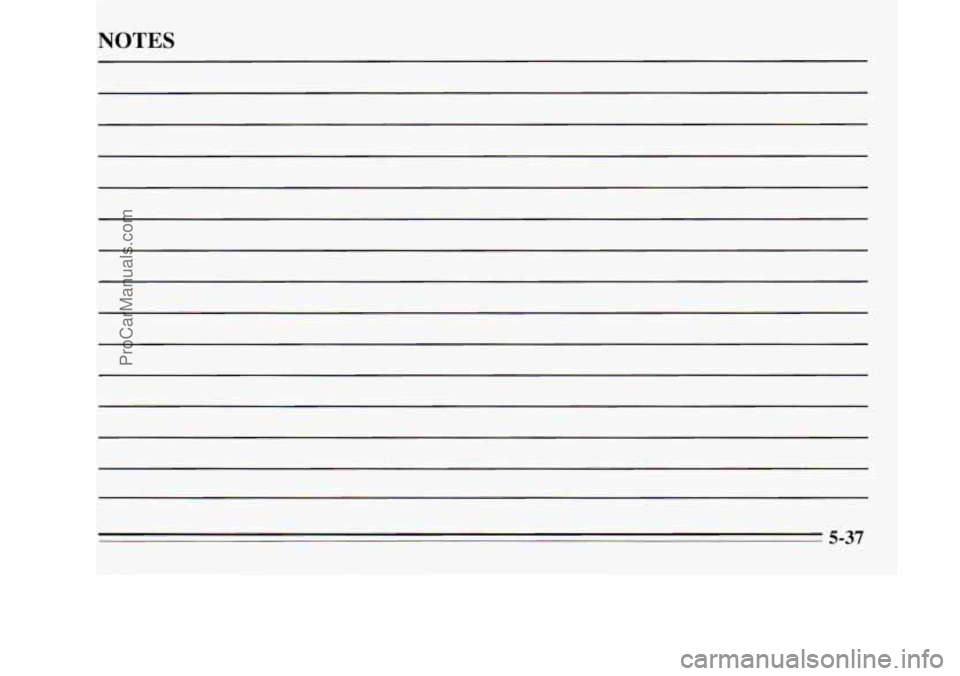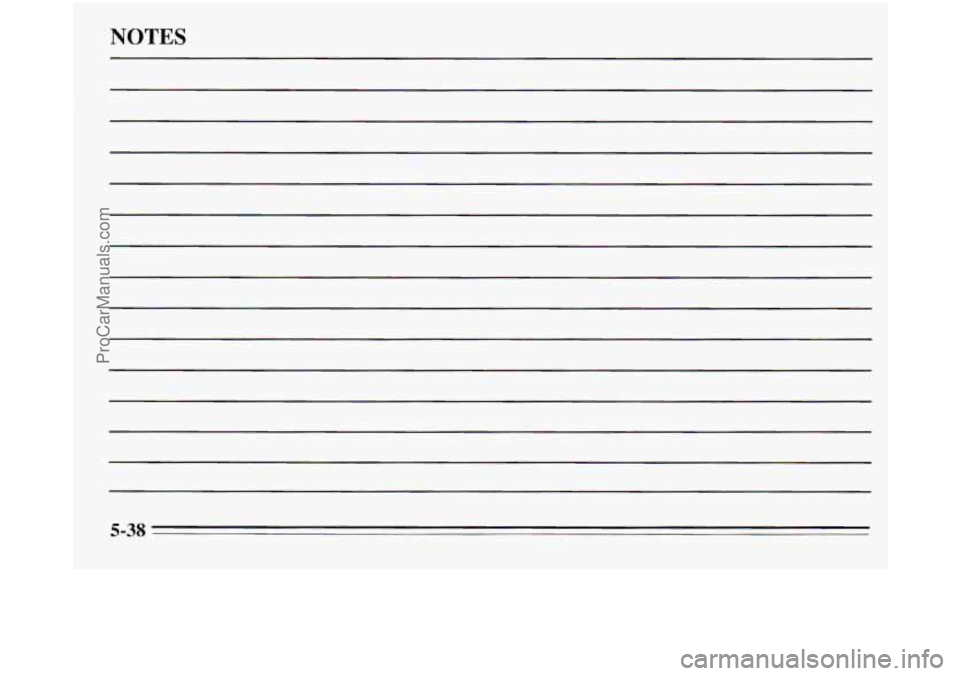OLDSMOBILE SILHOUETTE 1995 Owners Manual
SILHOUETTE 1995
OLDSMOBILE
OLDSMOBILE
https://www.carmanualsonline.info/img/31/58210/w960_58210-0.png
OLDSMOBILE SILHOUETTE 1995 Owners Manual
Trending: display, boot, check engine, odometer, jump start terminals, seats, steering wheel
Page 251 of 390
9. Attach the folding wrench to the jack, and rotate the
wrench clockwise to raise the jack head a few inches.
I L L.
Gn J
IO. Near each wheel, there is a notch in the vehicle's
frame. Position the jack and raise the jack head
until
it fits firmly into the notch in the vehicle's frame
(nearest the flat tire).
Do not raise the vehicle yet.
Put the compact spare tire near you.
5-29
ProCarManuals.com
Page 252 of 390
NOTICE:
Raising your vehicle with the jack improperly
positioned will damage the vehicle or may allow the vehicle
to fall off the jack. Be sure to fit the
jack lift head into the proper location before
raising your vehicle.
11. Raise the vehicle by rotating the folding wrench
clockwise in the jack. Raise the vehicle far enough
off the ground so there is enough room for the spare
tire to fit.
12. Remove all the wheel nuts and take off the flat tire.
I
' 5-30
ProCarManuals.com
Page 253 of 390
13. Remove any rust or dirt from the wheel bolts,
mounting surfaces and spare wheel. Place the spare
on the wheel mounting surface.
14. Replace the wheel nuts with the rounded end of the
nuts toward the wheel. Tighten each nut by hand
until the wheel is held against the hub.
15. Lower the vehicle by attaching the folding wrench
to the jack and rotating the wrench
counterclockwise. Lower the jack completely.
ProCarManuals.com
Page 254 of 390
16. Tighten the wheel nuts firmly in a crisscross
sequence as shown. 17.
Lay the flat tire near the rear of the vehicle with the
valve stem down. Slide the cable retainer through
the center
of the wheel and raise the flat tire until
you hear the hoist mechanism click twice. This
means that the wheel is firmly stored against the
underside
of the vehicle. When storing the spare
tire, be certain
to turn the spare so the valve stem is
near the rear
of the vehicle. This will help you to
check and maintain tire pressure in the spare.
Push against the tire to be certain it is stored firmly.
5-32
ProCarManuals.com
Page 255 of 390
18. Replace all jacking tools as they were stored in the
storage compartment and replace the compartment
cover. Be sure
to also store the nylon nut caps. When
you replace
the compact spare tire with a full-size
tire, replace the
nylon nut caps over the wheel nuts.
Tighten
them “hand tight” using the folding wrench
(see step
7).
5-33
ProCarManuals.com
Page 256 of 390
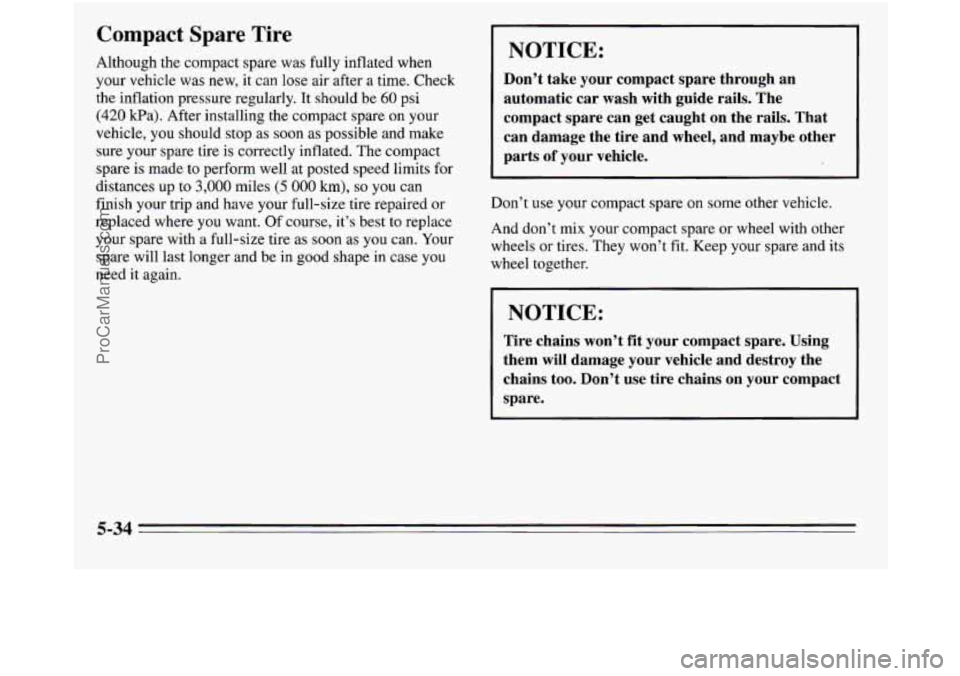
Compact Spare Tire
Although the compact spare was fully inflated when
your vehicle was new, it can lose air after a time. Check
the inflation pressure regularly. It should be
60 psi
(420 Pa). After installing the compact spare on your
vehicle, you should stop as soon as possible and make
sure your spare tire is correctly inflated. The compact
spare
is made to perform well at posted speed limits for
distances up
to 3,000 miles (5 000 km), so you can
finish your trip and have your full-size tire repaired or
replaced where you want. Of course, it’s best to replace
your spare with a full-size tire as soon as you can. Your
spare will last longer and be in good shape in case
you
need it again.
NOTICE:
Don’t take your compact spare through an
automatic car wash with guide rails. The
compact spare can get caught
on the rails. That
can damage the tire and wheel, and maybe other
parts
of your vehicle.
Don’t use your compact spare on some other vehicle.
And don’t mix your compact spare or wheel with other
wheels
or tires. They won’t fit. Keep your spare and its
wheel together.
NOTICE:
Tire chains won’t fit your compact spare. Using
them will damage your vehicle and destroy the
chains too. Don’t use tire chains
on your compact
spare.
5-34
ProCarManuals.com
Page 257 of 390
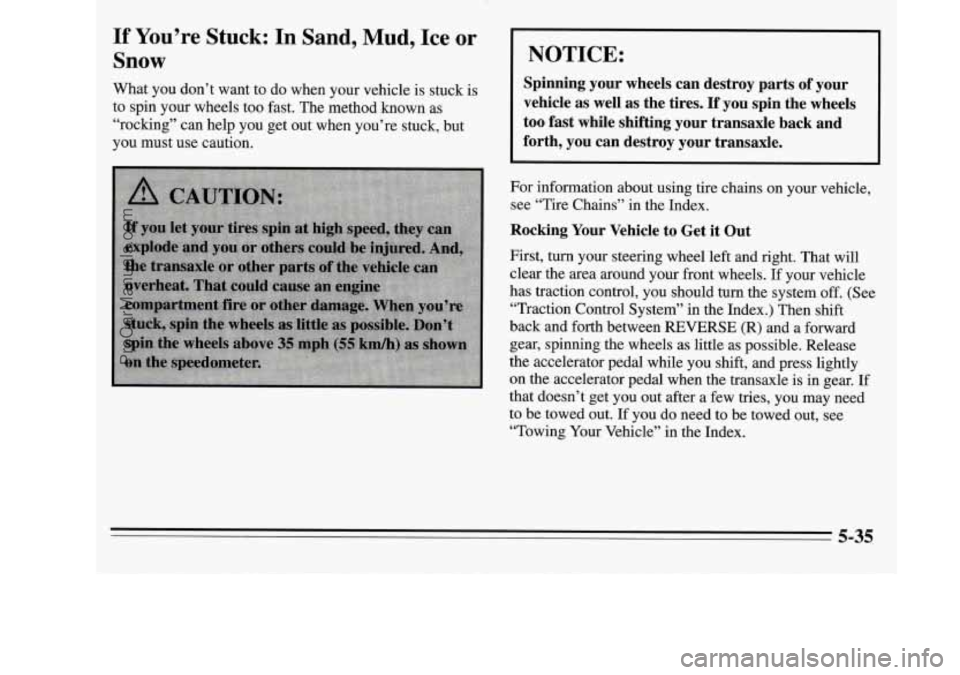
If You’re Stuck: In Sand, Mud, Ice or
Snow
What you don’t want to do when your vehicle is stuck is
to spin your wheels too fast. The method known as
“rocking” can help you get out when you’re stuck, but
you must use caution.
NOTICE:
Spinning your wheels can destroy parts of your
vehicle as well as the tires.
If you spin the wheels
too fast while shifting your transaxle back and
forth, you can destroy your transaxle.
For information about using tire chains on your vehicle,
see “Tire Chains’’ in the Index.
Rocking Your Vehicle to Get it Out
First, turn your steering wheel left and right. That will
clear the area around your front wheels.
I€ your vehicle
has traction control, you should turn the system off. (See
“Traction Control System” in the Index.) Then shift
back and forth between
REVERSE (R) and a forward
gear, spinning the wheels as little as possible. Release
the accelerator pedal while you shift, and press lightly
on the accelerator pedal when the transaxle is in gear. If
that doesn’t get you out after a few tries, you may need
to be towed out.
If you do need to be towed out, see
“Towing Your Vehicle” in the Index.
ProCarManuals.com
Page 258 of 390
NOTES
5-36
ProCarManuals.com
Page 259 of 390
NOTES
5-37
ProCarManuals.com
Page 260 of 390
NOTES
5-38
ProCarManuals.com
Trending: battery location, timing belt, traction control, airbag, overheating, center console, start stop button
